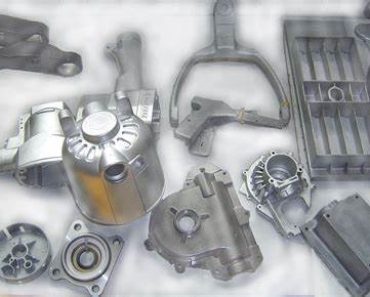When buying a home, one of the biggest decisions you’ll face is choosing the right mortgage. With various options available, it’s essential to explore each one to find the best fit for your financial situation. Among these options is the Graduated Payment Mortgage (GPM), a unique type of mortgage that offers both advantages and disadvantages.
Introduction to Graduated Payment Mortgage (GPM)
A Graduated Payment Mortgage, often abbreviated as GPM, is a type of mortgage where the initial payments start low and gradually increase over time. This structure is designed to accommodate borrowers who expect their income to rise steadily in the coming years.
GPMs typically have fixed interest rates and terms ranging from 15 to 30 years. However, what sets them apart from traditional mortgages is the payment schedule, which starts with lower payments and increases at predetermined intervals.
Advantages of GPM
One of the main advantages of a GPM is its lower initial payments. This feature makes it an attractive option for young professionals who may have limited income at the beginning of their careers but expect to earn more as they progress.
Additionally, the gradually increasing payments of a GPM can align with the borrower’s income growth, making it easier to manage financial obligations over time.
Disadvantages of GPM
Despite its benefits, GPMs come with their share of disadvantages. One potential downside is the possibility of higher overall payments compared to traditional mortgages. While the initial payments are lower, they increase over time, potentially resulting in higher total payments over the life of the loan.
Another drawback is the risk of payment shock, where borrowers may struggle to afford the increased payments as their income fails to rise as expected.
Comparison with Traditional Mortgages
In contrast to traditional mortgages, which typically have fixed monthly payments throughout the loan term, GPMs offer more flexibility in payment schedules. While traditional mortgages may be better suited for those with stable income and financial situations, GPMs can be advantageous for borrowers expecting income growth in the future.
Who Should Consider GPM?
GPMs are particularly suitable for young professionals who anticipate increasing earnings over time. They can also benefit those who plan to stay in their homes for a relatively short period, as the lower initial payments make homeownership more accessible in the early years.
How to Qualify for GPM
Qualifying for a GPM usually requires meeting certain income and credit score requirements. Lenders may also assess the borrower’s financial stability and future earning potential to determine eligibility.
GPM vs. Adjustable-Rate Mortgage (ARM)
While both GPMs and Adjustable-Rate Mortgages (ARMs) offer initial lower payments, they differ in how payments change over time. GPMs have a predetermined payment schedule, whereas ARMs adjust based on market interest rates. Choosing between the two depends on factors such as income stability and risk tolerance.
Tips for Managing GPM
To effectively manage a GPM, borrowers should budget for increasing payments, explore refinancing options when appropriate, and plan for potential changes in their financial circumstances.
Real-life Examples of GPM
Several case studies illustrate the benefits and challenges of GPMs in real-life scenarios. These examples provide insights into how GPMs can impact homeowners’ finances and decision-making processes.
Common Myths and Misconceptions about GPM
There are several misconceptions about GPMs, including the belief that they are always riskier than traditional mortgages. Debunking these myths can help borrowers make informed decisions about their mortgage options.
GPM in Today’s Housing Market
In today’s housing market, Can you use VA loan more than once remain a viable option for certain borrowers, although their availability may be limited compared to traditional mortgages. Economic factors and market trends play a significant role in shaping the landscape of mortgage options.
Regulations and Legal Considerations
Regulatory frameworks and legal protections govern the use of GPMs, ensuring that borrowers are adequately informed and protected throughout the mortgage process.
Future Prospects of GPM
As the housing market evolves and economic conditions change, the popularity of GPMs may fluctuate. However, they are likely to remain a relevant option for borrowers seeking flexibility in their mortgage payments.
Conclusion
In conclusion, a Graduated Payment Mortgage offers a unique payment structure that can benefit certain borrowers, especially young professionals and those expecting income growth. While it has advantages such as lower initial payments, borrowers should carefully consider the potential for higher overall payments and payment shock. By understanding the features and implications of GPMs, homeowners can make informed decisions about their mortgage options.
FAQs
- What is the main advantage of a graduated payment mortgage?
- The main advantage of a graduated payment mortgage is its lower initial payments, which can be beneficial for borrowers with limited income.
- Can anyone qualify for a graduated payment mortgage?
- Qualifying for a graduated payment mortgage typically requires meeting income and credit score requirements, as well as demonstrating future earning potential.
- Are graduated payment mortgages riskier than traditional mortgages?
- Graduated payment mortgages may pose a higher risk of payment shock due to increasing payments over time, but they can also offer benefits for certain borrowers.
- How does a graduated payment mortgage differ from an adjustable-rate mortgage?
- While both offer lower initial payments, a graduated payment mortgage has a predetermined payment schedule, whereas an adjustable-rate mortgage adjusts based on market interest rates.
- Is refinancing an option with a graduated payment mortgage?
- Refinancing may be an option with a graduated payment mortgage, depending on the borrower’s financial situation and market conditions.





